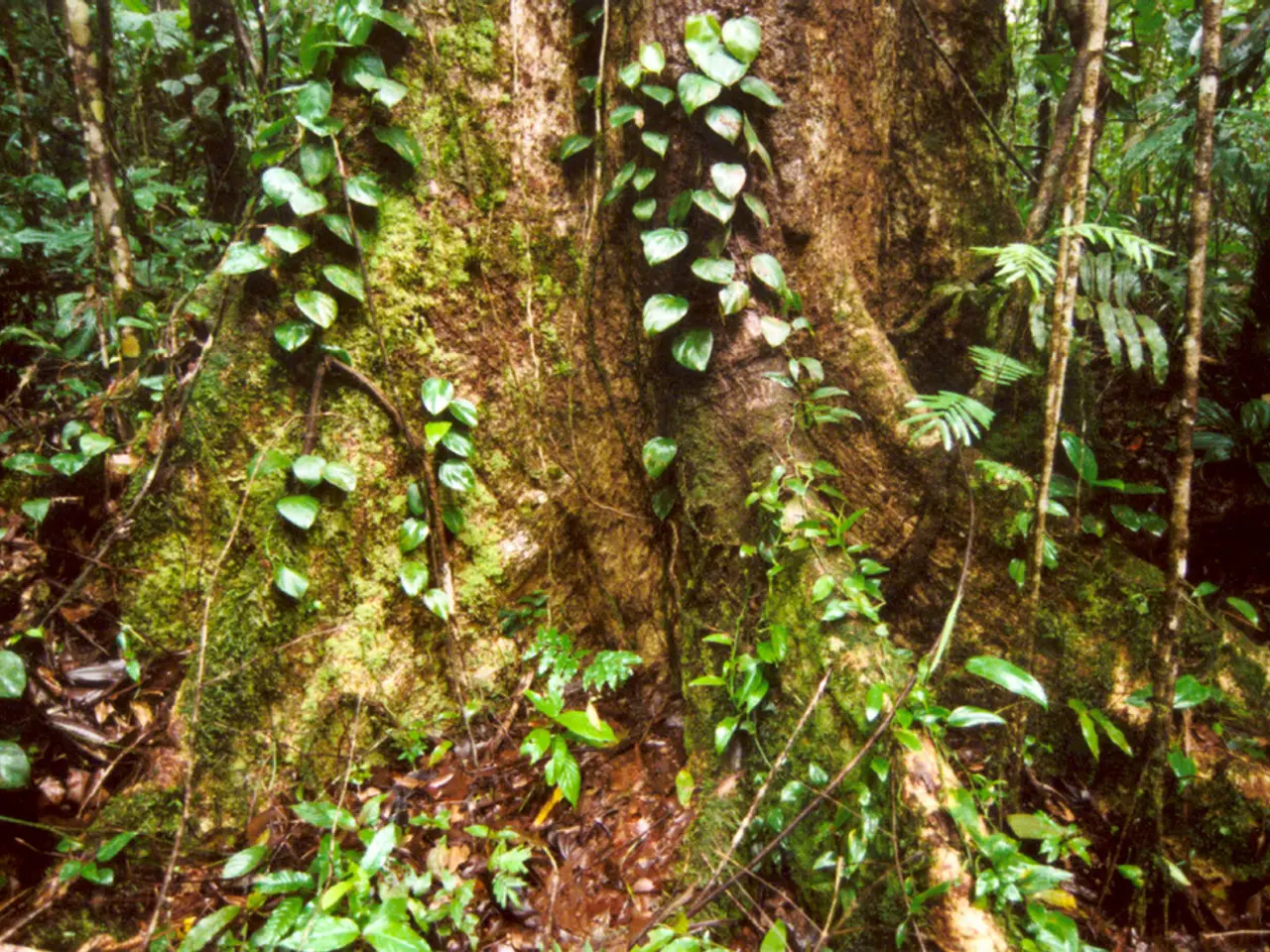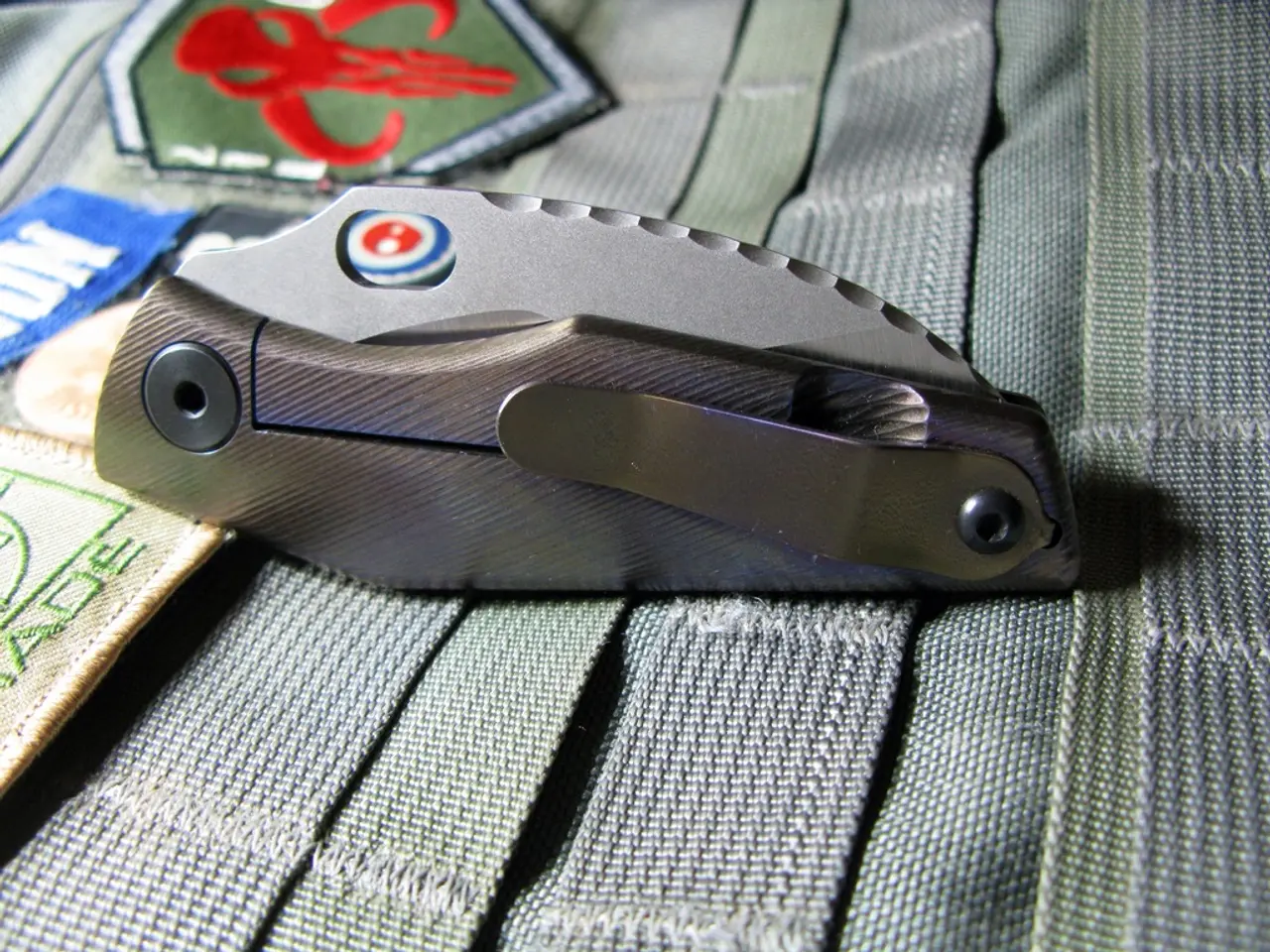Eradicating Persistent Plant Invasions
In the quest to maintain a beautiful and weed-free garden, managing perennial weeds is a crucial task. These persistent plants, including valerian, goldenrod, dandelion, horsetail, and Japanese knotweed, require a combination of effective identification methods and strategic control techniques.
## Identifying Perennial Weeds
Understanding the unique features of each weed is the first step towards successful management.
Valerian, with its distinctive strong odour, grows up to 3 feet tall and features heart-shaped leaves at the base and smaller leaves on the stem. Its white or pinkish flowers cluster in a panicle.
Goldenrod, a tall perennial herb, has wand-like stems with narrow, pointed leaves. Yellow flowers form in clusters at the top of the stem.
Dandelions are easily recognisable with their bright yellow flowers that form a rosette of jagged, toothed leaves.
Horsetail, with its bamboo-like stems, produces small, scale-like leaves and spores at the top of the stem.
Japanese Knotweed, a notoriously invasive weed, has bamboo-like stems that grow up to 10 feet tall. Its heart-shaped leaves have pointed tips, and small white flowers appear in late summer.
## Controlling Perennial Weeds
### Non-Chemical Control
Physical removal is an effective method for dandelions and horsetail, but for Japanese knotweed, it's crucial to remove all rhizomes to prevent regrowth. Mulching can also suppress weed growth by preventing light from reaching the soil, and boiling water can kill weeds without chemicals.
### Chemical Control
Selective herbicides can be used for widespread areas of goldenrod or Japanese knotweed. Pre-emergent herbicides prevent seeds from germinating, while post-emergent herbicides target growing weeds. For perennial weeds, post-emergent herbicides are often more effective.
### Integrated Control Strategies
Brush hogging, cutting weeds multiple times throughout the growing season, is particularly effective for large areas of weeds like goldenrod and Japanese knotweed. Combining physical removal, mulching, and targeted herbicide application can provide long-term control.
### Specific Control Strategies
Regular mowing and removing the flower heads before they seed can help control dandelion populations. Horsetail, with its deep roots, is challenging to control, but repeated physical removal and mulching can help manage its spread. Japanese Knotweed requires intense control measures due to its invasive nature, and professional removal services are often recommended.
## Timing and Frequency
Multiple cutting sessions throughout the growing season can effectively weaken weeds like goldenrod and Japanese knotweed. Waiting 4-6 weeks between cutting sessions allows weeds to regrow enough for effective control.
By combining these methods, you can effectively manage and control perennial weeds in your garden or landscape. Regular hoeing off the leaves of bulbil-type weeds before they flower, or covering soil from March to June with black polythene, can also help suppress growth.
In conclusion, understanding the unique characteristics of perennial weeds and employing a combination of effective identification methods and control techniques can help maintain a beautiful, weed-free garden.
Maintaining a beautiful and weed-free home-and-garden requires identification and control of perennial weeds. For instance, valerian, with its heart-shaped leaves and distinct strong odor, can be controlled through physical removal or targeted herbicides. Similarly, goldenrod, with its wand-like stems and yellow flowers, can be managed through brush hogging, selective herbicides, or regular mowing.




